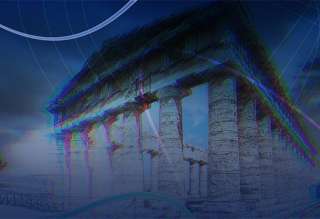SPS Feed
Top Reasons to Join SPS Today!
1. IEEE Signal Processing Magazine
2. Signal Processing Digital Library*
3. Inside Signal Processing Newsletter
4. SPS Resource Center
5. Career advancement & recognition
6. Discounts on conferences and publications
7. Professional networking
8. Communities for students, young professionals, and women
9. Volunteer opportunities
10. Coming soon! PDH/CEU credits
Click here to learn more.
The Latest News, Articles, and Events in Signal Processing
Human speech can be characterized by different components, including semantic content, speaker identity and prosodic information. Significant progress has been made in disentangling representations for semantic content and speaker identity in speech recognition and speaker verification tasks respectively. However, it is still an open challenging question to extract prosodic information because of the intrinsic association of different attributes, such as timbre and rhythm, and because of the need for supervised training schemes to achieve robust speech recognition.
Speech applications in far-field real world settings often deal with signals that are corrupted by reverberation. The task of dereverberation constitutes an important step to improve the audible quality and to reduce the error rates in applications like automatic speech recognition (ASR). We propose a unified framework of speech dereverberation for improving the speech quality and the ASR performance using the approach of envelope-carrier decomposition provided by an autoregressive (AR) model.
Question answering requiring numerical reasoning, which generally involves symbolic operations such as sorting, counting, and addition, is a challenging task. To address such a problem, existing mixture-of-experts (MoE)-based methods design several specific answer predictors to handle different types of questions and achieve promising performance. However, they ignore the modeling and exploitation of fine-grained reasoning-related operations to support numerical reasoning, encountering the inadequacy in reasoning capability and interpretability.
The speaker recognition evaluation is conducted in a framework in which three score distributions and two decision thresholds are employed, and the statistic of interest is an average of the two weighted sums of the probabilities of type I and type II errors at the two thresholds correspondingly. And data dependence caused by multiple use of the same subjects exists ubiquitously in order to generate more samples because of limited resources.
Adaptive importance sampling (AIS) methods provide a useful alternative to Markov Chain Monte Carlo (MCMC) algorithms for performing inference of intractable distributions. Population Monte Carlo (PMC) algorithms constitute a family of AIS approaches which adapt the proposal distributions iteratively to improve the approximation of the target distribution.
Vision Transformer (ViT)-based image super-resolution (SR) methods have achieved impressive performance and surpassed CNN-based SR methods by utilizing Multi-Head Self-Attention (MHSA) to model long-range dependencies. However, the quadratic complexity of MHSA and the inefficiency of non-parallelized window partition seriously affect the inference speed, hindering these SR methods from being applied to application scenarios requiring speed and quality.
Learning-based approaches inspired by the scattering model for enhancing underwater imagery have gained prominence. Nevertheless, these methods often suffer from time-consuming attributable to their sizable model dimensions. Moreover, they face challenges in adapting unknown scenes, primarily because the scattering model's original design was intended for atmospheric rather than marine condition.
Decoding silent reading Electroencephalography (EEG) signals is challenging because of its low signal-to-noise ratio. In addition, EEG signals are typically non-Euclidean structured, therefore merely using a two-dimensional matrix to represent the variation of sampling points of each channel in time cannot richly represent the spatial connection between channels.
Date: 30 January 2024
Time: 8:00 AM ET (New York Time)
Presenter(s): Dr. Congli Wang, Dr. Wolfgang Heidrich
Manuscript Due: 31 July 2024
Publication Date: March 2025
Date: 6 March 2024
Time: 10:00 AM ET (New York Time)
Presenter(s): Javier Escudero
Date: 11 January 2024
Time: 10:00 AM ET (New York Time)
Presenter(s): Dr. Enrico Magli
Date: 7 February 2024
Time: 8:00 AM ET (New York Time)
Presenter(s): Dr. Athina P. Petropulu, Mr. Zhaoyi Xu
Date: 9 January 2024
Time: 8:00 AM ET (New York Time)
Presenter(s): Dr. Ran He
Date: 29 January 2024
Time: 10:00 AM ET (New York Time)
Speaker(s): Dr. Joseph Tabrikian
This paper presents a neural-enhanced probabilistic model and corresponding factor graph-based sum-product algorithm for robust localization and tracking in multipath-prone environments. The introduced hybrid probabilistic model consists of physics-based and data-driven measurement models capturing the information contained in both, the line-of-sight (LOS) component as well as in multipath components (NLOS components). The physics-based and data-driven models are embedded in a joint Bayesian framework allowing to derive from first principles a factor graph-based algorithm that fuses the information of these models.
Neural networks have achieved state-of-the-art performance on the task of acoustic Direction-of-Arrival (DOA) estimation using microphone arrays. Neural models can be classified as end-to-end or hybrid, each class showing advantages and disadvantages. This work introduces Neural-SRP, an end-to-end neural network architecture for DOA estimation inspired by the classical Steered Response Power (SRP) method, which overcomes limitations of current neural models.
In this article, we consider using time-of-arrival (TOA) measurements from a single moving receiver to locate a moving target at constant velocity that emits a periodic signal with unknown signal period. First, we give the TOA measurement model and deduce the Cram
Synthetically-generated images are getting increasingly popular. Diffusion models have advanced to the stage where even non-experts can generate photo-realistic images from a simple text prompt. They expand creative horizons but also open a Pandora's box of potential disinformation risks. In this context, the present corpus of synthetic image detection techniques, primarily focusing on older generative models like Generative Adversarial Networks, finds itself ill-equipped to deal with this emerging trend.
Pages
SPS on Twitter
- DEADLINE EXTENDED: The 2023 IEEE International Workshop on Machine Learning for Signal Processing is now accepting… https://t.co/NLH2u19a3y
- ONE MONTH OUT! We are celebrating the inaugural SPS Day on 2 June, honoring the date the Society was established in… https://t.co/V6Z3wKGK1O
- The new SPS Scholarship Program welcomes applications from students interested in pursuing signal processing educat… https://t.co/0aYPMDSWDj
- CALL FOR PAPERS: The IEEE Journal of Selected Topics in Signal Processing is now seeking submissions for a Special… https://t.co/NPCGrSjQbh
- Test your knowledge of signal processing history with our April trivia! Our 75th anniversary celebration continues:… https://t.co/4xal7voFER











